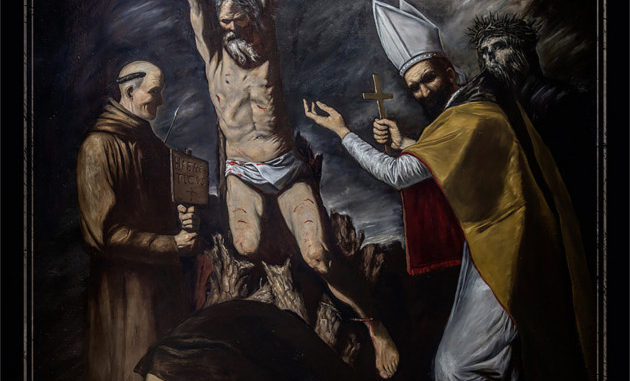
FROM THE blackest pit of Athens, Greece, the Titans have risen yet again to unleash pain and fury upon us mere mortals. For over 30 years, controversial Greek metal legends Rotting Christ have delivered nothing but blasphemy in the form of music, but not in the way one might expect. With their 13th album “The Heretics,” they have not only managed to stay relevant but have also crafted one of their most beautiful albums to date.
Rotting Christ is a band that has experimented frequently over the years. They started off as a simple black metal band, but over time have incorporated more melody to their music. In recent years, they have turned from melodic death metal to full-on symphonic annihilation.
Utilizing an orchestra in metal music is quite controversial, and often doesn’t turn out well. Metal bands who utilize symphonic elements often forgot that they have a guitarist in the band or the sound is merely corny. Rotting Christ, however, is one of the few bands that can actually pull it off. Until now the best representation of Rotting Christ’s orchestral sound was their 2013 album “Do What Thou Wilt.” It is catchy, melodic and diverse in song structure and sound and deals with interesting themes that are accentuated by the orchestra, which includes a breathtaking choir chanting in Greek. “The Heretic” consists of almost everything that made this album so great, but with much more clear and powerful production and notable progression as musicians. Though it isn’t quite as exceptional as “Do What Thou Wilt,” “The Heretics” should please fans of Rotting Christ’s newer and older material.
In terms of the instrumentation, the drumming consists of typical blast beats and the bass is stuck in the background of all the other overwhelming sounds — it is the guitars that really shine. Guitarist and vocalist Sakis Tolis delivers some truly astonishing melodies and rhythms that blend almost perfectly with the orchestra. The songs “Fire God and Fear” and “Vetry Zyle” are the best representations of melody and orchestration creating a sensation that you are entering the gates of a heavenly realm. “Vetry Zyle” is made all the better with the inclusion of Russian Opera singer Irina Zybina. While Tolis doesn’t have the greatest vocals, his spoken monologues are done very well and never feel too repetitive. What is particularly interesting about them is that they are often based off of famous poets. The song “The Raven,” for example includes Tolis reciting the words of Edgar Allan Poe. Combined with the orchestra, this adds a lot of atmosphere to the music. The orchestra, as mentioned earlier, is the best part of the whole album due to its resonance with the metal instrumentation and themes explored. The choir best exemplifies this. As the title suggests, the album deals a lot with the topic of heresy, but they also explore a variety of ancient mythologies and, of course, blasphemy.
In short, “The Heretics” is one of the best symphonic metal albums ever crafted. What keeps this album from being better than “Do What Thou Wilt” is the fact that there isn’t quite as much diversity in song structure — plus there are songs on that album that just can’t be topped. Still, this album is a representation of how far Rotting Christ have come as musicians, and is also proof that experimentation does, sometimes, work out for the better.
Subscribe to the Mossy Log Newsletter
Stay up to date with the goings-on at Lewis & Clark! Get the top stories or your favorite section delivered to your inbox whenever we release a new issue.

Leave a Reply